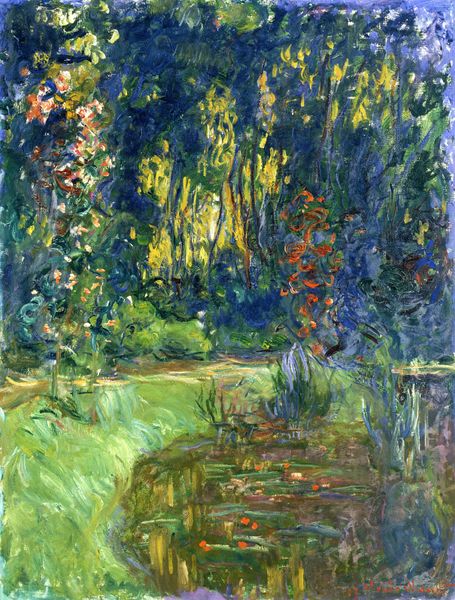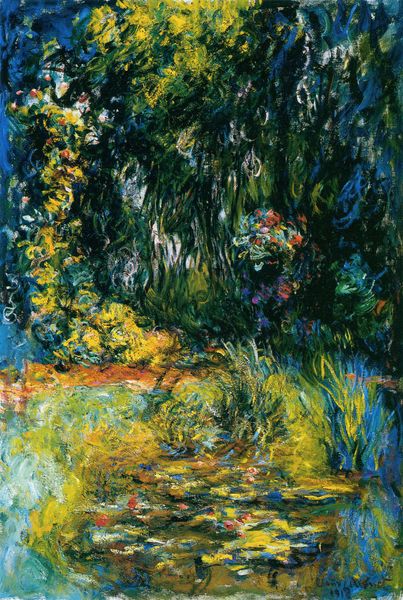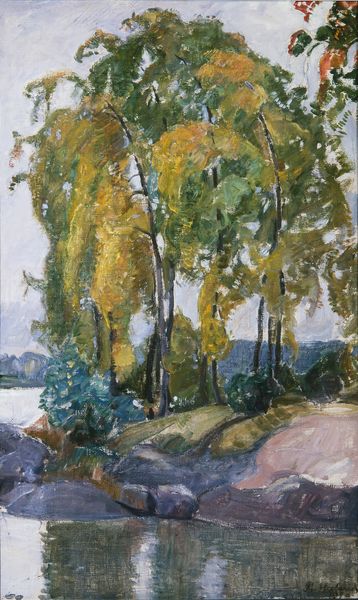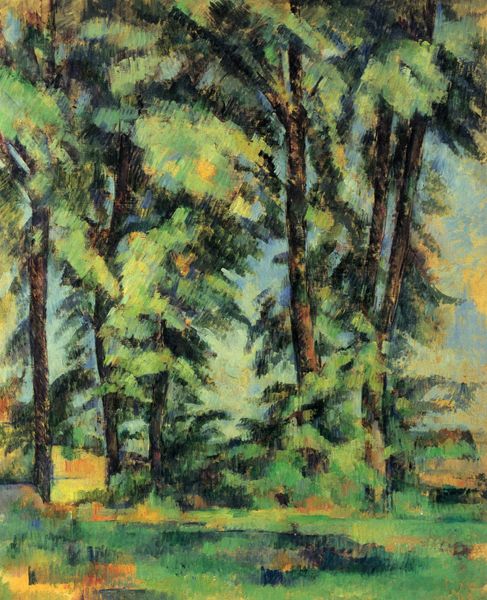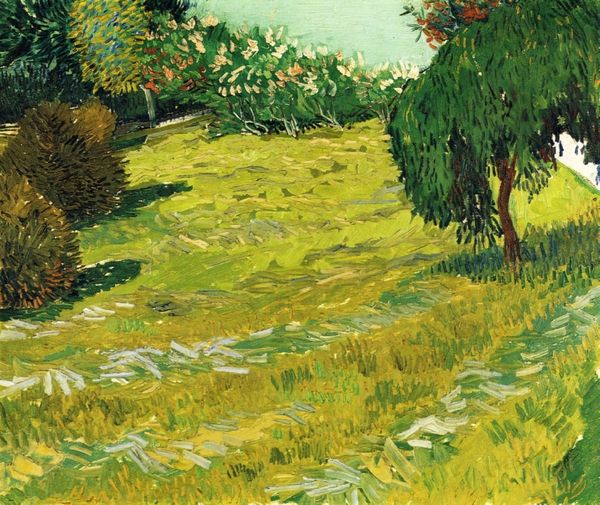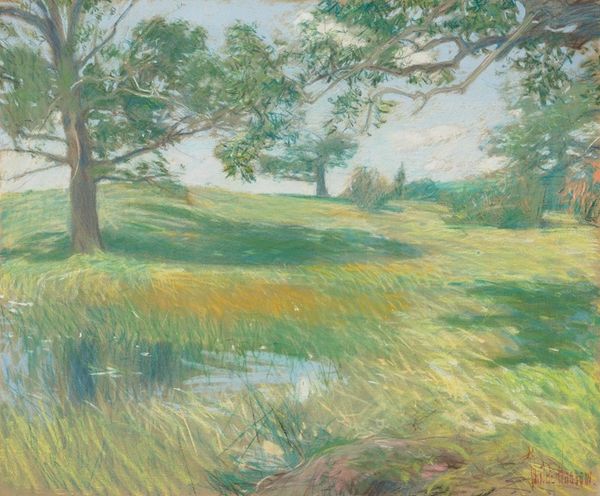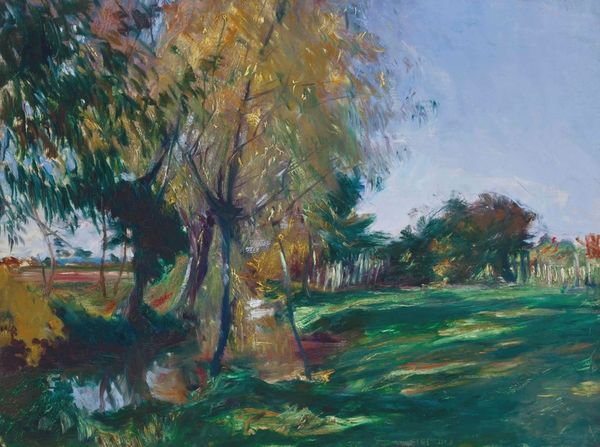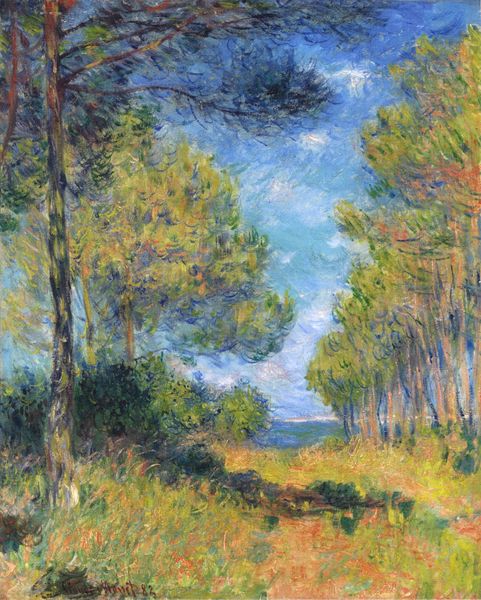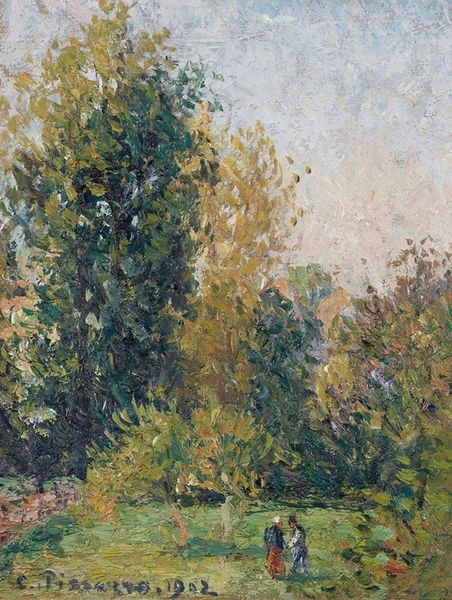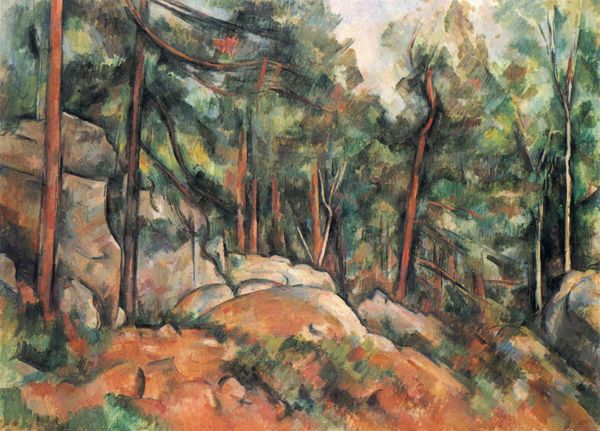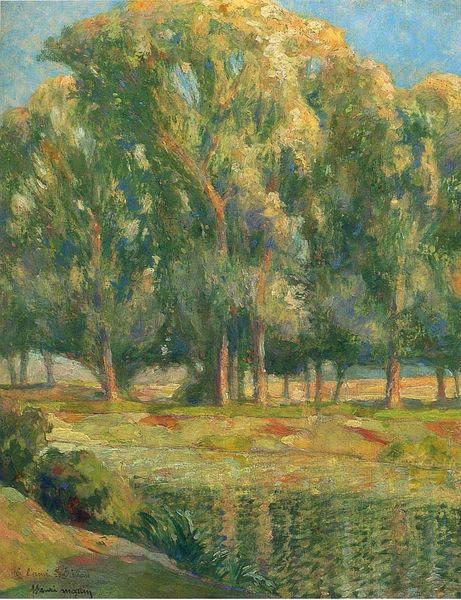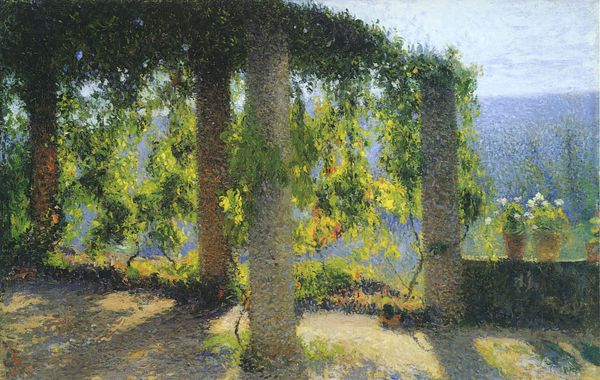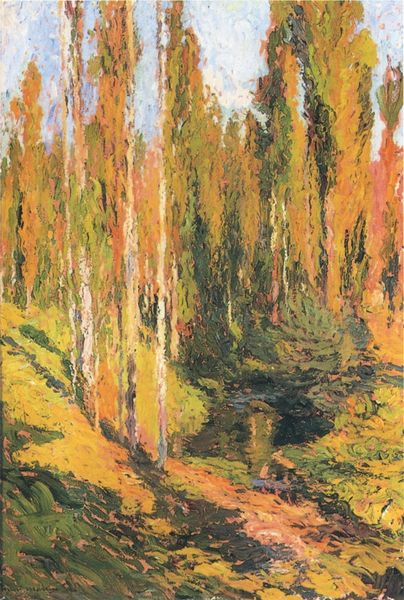
tempera, painting, plein-air, oil-paint, fumage, paper, impasto
#
tree
#
tempera
#
painting
#
plein-air
#
oil-paint
#
landscape
#
fumage
#
impressionist landscape
#
paper
#
form
#
oil painting
#
impasto
#
forest
#
geometric
#
plant
#
orientalism
#
post-impressionism
#
nature
Dimensions: 73 x 54.3 cm
Copyright: Public domain
Curator: Before us, we have Paul Gauguin's "The Large Tree," an oil on paper work created in 1889. Editor: There's something dreamlike about the painting’s light. The color palette, dominated by greens and earth tones with the bluish-grey trees, evokes a feeling of serene melancholy. Curator: Absolutely. Gauguin, during this period, was deeply influenced by Pont-Aven School, and sought to move beyond impressionism into something more emotionally resonant. The flat planes of color and the somewhat distorted perspective were deliberate choices to convey subjective experience over objective reality. Gauguin wasn't simply painting what he saw, but what he felt. Editor: Note how the trees form vertical pillars, which lead the eye up and out of the composition? It is as though they frame and simultaneously liberate the composition from purely naturalistic readings, pointing instead towards an arrangement that's almost architectural in its precision. The way he lays down color in visible strokes adds a tangible materiality. Curator: Right. Gauguin's artistic circle were disillusioned with industrialized society, idealizing rural, “primitive” cultures as a form of protest, of societal critique, infusing his artworks with these layered cultural values and ideas of primitivism, that deeply impacted modern art and thought. Editor: Interesting how this social agenda can inform such choices as broad areas of flattened colour instead of detailed perspective work; which would then point viewers to read it at its purely compositional qualities; how the visual rhythm is more a vehicle, or articulation of socio-cultural values and agendas than a straightforward interpretation of external reality. It seems to suggest the artwork itself becomes less about aesthetic observation and closer to the role of social text. Curator: Precisely! It underscores how art cannot be separated from its social and political framework, with Gauguin crafting "The Large Tree" during the time that colonial views romanticised foreign landscape, reflecting complex colonialist narratives and notions of escapism, primitivism in that historical and artistic moment. Editor: The tree becomes then almost like the flag around which social tensions of the day flew – it’s more than formal exercises in conveying spatial relations! Curator: It reminds us that art, including works of landscapes as seemingly straightforward as this one, plays a vital public role in challenging and reflecting social ideals. Editor: Looking closely, I start noticing brushwork now - quite wonderful how the brush dances over form - the eye of the social storm so to speak.
Comments
No comments
Be the first to comment and join the conversation on the ultimate creative platform.
